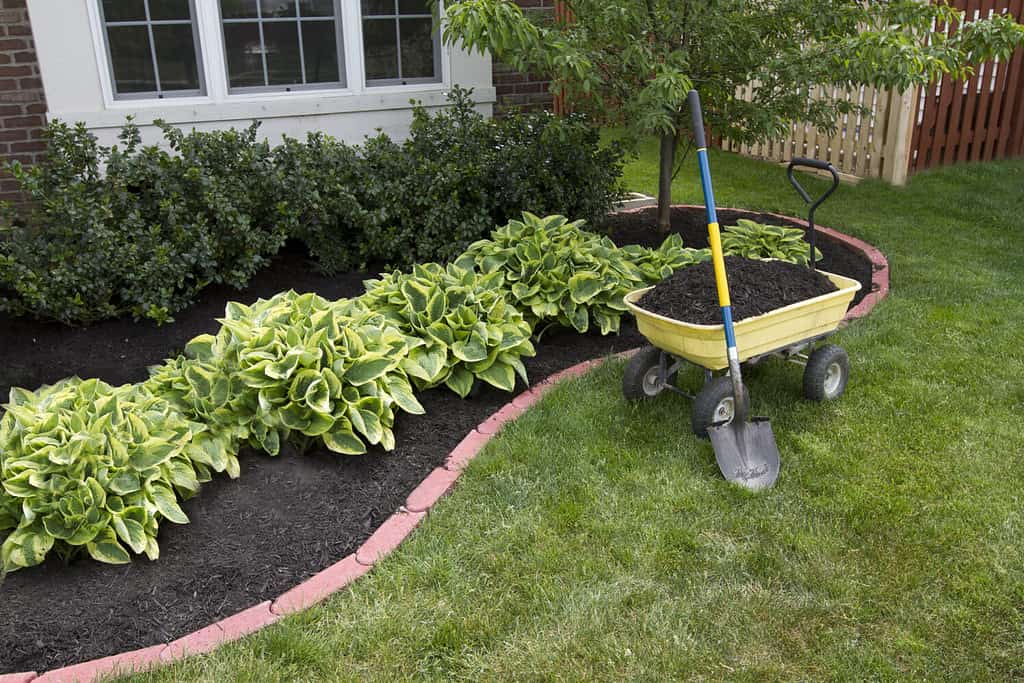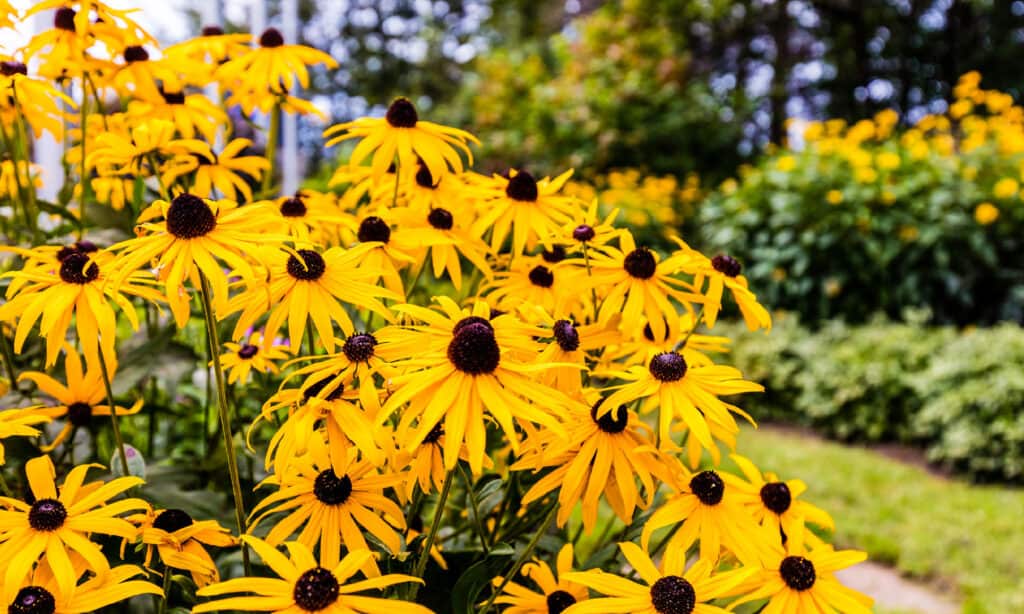Discover Georgia’s Planting Zones – Plus 7 Keys To Keeping Flowers, Shrubs, and Trees Alive
Are y’all ready to discover Georgia’s planting zones? Chock full of Southern hospitality, rolling hills, and coastal breezes, the Peach State boasts diverse landscapes. If you want to keep your flowers, shrubs, and trees alive, it is important to understand your unique planting zone. Explore the secrets to landscaping in Georgia and discover 7 keys to keep your landscape thriving while you sit back and enjoy some sweet tea.
Understanding Planting Zones
You’re probably wondering what a planting zone is and why you should care. Well, understanding planting zones is like knowing grandma’s secret pecan pie recipe—it makes all the difference. While the Peach State offers a smorgasbord of pies, it also offers diverse geography and climate.
Georgia’s USDA Hardiness Zones are like the secret spice blends of delicious Southern pie. Its zones range from 6a to 9a, and they determine the shrubs, plants, and trees that will thrive in your landscape. It is the first step in cultivating a garden that is as resilient and enduring as a good ol’ Southern tradition.

©https://planthardiness.ars.usda.gov/ – License
Georgia’s Planting Zones
In the land where peaches are the state fruit and the largest drive-in restaurant seats 800, Georgia’s geographical diversity means you need to find your zone before selecting plants for your landscape. Check out Georgia’s planting zones:
The Blue Ridge Mountains (Zones 6a-6b)
The Blue Ridge Mountains, part of the famous Appalachian Range, cover the northernmost part of the Peach State. Zone 6a experiences cold winters, frost, and even the occasional snowfall. Choose cold-hardy plants that will make the most out of the shorter growing seasons.
The Heart of Georgia (Zones 7a-8a)
The heart of Georgia is a transition zone encompassing most of northern and central Georgia, including Atlanta, Macon, and Augusta. These regions feature milder winters and longer growing seasons. However, residents may encounter frosty nights during winter.
The Southern Heartland (Zone 8b)
Zone 8b covers the southernmost areas of the state, including areas close to Georgia’s coast. This zone features mild winters and frost occurrences are rare. The Southern heartland of the Peach State also provides the ideal climate for a many plant species year-round.
The Coast (Zone 9a)
Journey to the southeastern portion of Georgia to experience 110 miles of sandy beaches, including 15 barrier islands and numerous resort destinations. Frost is rare in this region and snow is virtually unheard of. This zone also experiences an extended growing season, and most gardens thrive year-round.
Plants for Georgia’s USDA Hardiness Zones
Bring a touch of Georgia charm to your landscape by selecting plants that will thrive in your region and planting zone.
Plants for Zones 6a to 6b (The Blue Ridge Mountains)
In this cooler region, choose plants that can handle frost and chilly temperatures, like a cozy flannel shirt on a crisp autumn day. Varieties will display cold hardiness and also adaptability.
Popular plants for the range and foothills include:
- Bottlebrush buckeye (Aesculus parviflora)
- Crape myrtle (Lagerstroemia indica)
- Hosta (Hosta spp.)
- Flowering dogwood (Cornus florida)
- Forsythia (Forsythia spp.)
- Lilac (Syringa vulgaris)
- Peony (Paeonia spp.)
- Purple pavement rose (Rosa rugosa)

Flowering dogwood trees often display deeper red or pink buds in colder weather.
©Nina B/Shutterstock.com
Plants for Zones 7a to 8b (Northern, Central, and Southern Georgia)
Endless possibilities await the residents of northern, central, and southern Georgia. With its mild winters and extended growing season, most plants thrive in these regions. Opt for native species to enhance the biodiversity of the Peach State.
Popular native plants for most of Georgia include:
- Carolina jessamine (Gelsemium sempervirens)
- Coral honeysuckle (Lonicera sempervirens)
- Eastern bluestar (Amsonia tabernaemontana)
- Eastern redbud (Cercis canadensis)
- Georgia aster (Symphyotrichum georgianum)
- Georgia oak (Quercus georgiana)
- Swamp azalea (Rhododendron viscosum)
- Virginia sweetspire (Itea virginica)
Plants for Zone 9a (Coastal Georgia)
If you have made your way to Savannah and the southern coast, the charming Peach State will grace you with warm weather and also briny air, year-round. Frost and snow are very rare in Zone 9a, opening the door to a world of plant possibilities. However, it is best to choose salt-tolerant varieties that will flourish like true Southern Belles.
Popular salt-tolerant plants for the Georgia coast include:
- Cabbage palmetto (Sabal palmetto)
- Cocoplum (Chrysobalanus icaco)
- Railroad vine (Ipomoea pes-caprae)
- Sea lavender (Limonium spp.)
- Sea oats (Uniola paniculata)
- Seashore elder (Iva imbricata)
- Southern wax myrtle (Morella cerifera)
- Yaupon holly (Ilex vomitoria)
7 Key to Keep Flowers, Shrubs, and Trees Alive in Georgia
Turn your Georgia garden into a Southern paradise with these tips to keep your plants thriving in the Peach State.
1. Choose the Right Plants
Like a great Southern recipe, choosing the perfect plants for your landscape is all about harmony. Select plants suited for your USDA zone. For those nestled in the northern reaches of the state, consider cool-loving species like flowering dogwood trees and forsythia to grace your garden. As you move south, from the foothills to the coastal regions, explore the rich variety of native plants, such as sea oats and yaupon holly.
2. Practice Proper Watering Techniques
The Georgia sun is hot, and mastering proper watering techniques is like quenching your garden’s thirst with a tall glass of sweet tea on a hot summer day. Furthermore, the humid subtropical climate changes in an instant, from rainy stretches to dry air. Follow some simple steps to practice proper watering techniques in your Georgia landscape:
- Water deeply: Make your plants more drought-resistant by watering deeply. Additionally, aim to water two to three times per week for 30 minutes, depending on rainfall.
- Morning sessions: Water in the morning between 6 a.m. to 10 a.m. to reduce evaporation and lower the risk of fungal diseases.
- Target the base: Water the base of your plants, not the leaves, to ensure that the roots receive the moisture.
- Install drip irrigation: Installing a drip irrigation system delivers water directly to your plant roots, ensuring efficient and consistent watering. It also helps combat Georgia breezes and evaporation.
3. Mulch Your Garden Beds
Mulch isn’t just for looks. It is a key ingredient in nurturing a healthy landscape in the Peach State. Georgia’s sunny days are usually scorchers, and your flower beds need all of the moisture they can get. Mulch provides a protective barrier that reduces evaporation and helps the soil retain water. It’s like a cool, shady hat for your plants.
With the sizzling temps and sometimes cold winters, it is also important to protect your plants’ roots. Mulch also acts as a natural thermostat, keeping the soil cooler in the summer and providing insulation during the winter.
Weed ControlIf all of those benefits weren’t already enough, mulch is also your secret weapon in your battle against weeds. It creates a barrier between the soil and the sun which discourages pesky weeds from taking root. Your garden stays tidy, and you save time that you would be spending hand pulling weeds. It’s a win-win.
Soil Enrichment and Erosion ControlAs the mulch breaks down, it adds valuable organic matter to your soil. This enriches the soil, improves its structure, and enhances its ability to nourish your plants. Furthermore, Georgia is no stranger to heavy rains. Mulch also prevents soil erosion by absorbing rainfall, keeping your garden beds intact, and preventing the loss of valuable topsoil.

©Ozgur Coskun/Shutterstock.com
4. Enhance Soil Quality
A thriving landscape begins with a solid foundation from the ground up. The quality of your soil is a key player that creates the perfect foundation for your plants. Start by understanding your soil type. Georgia’s soils vary depending on your region, from sand to dense clay. Contact your local agricultural extension office to request information on soil testing in your area to determine your soil’s pH, nutrient levels, and composition.
Amend as NeededNow that you know your soil characteristics and its Southern personality, tailor your amendments to your landscape. Soil amendments address a range of common soil issues, including pH, nitrogen, phosphorus, and potassium levels.
For the Peach State’s dense, clay soils, consider incorporating organic matter like compost to improve drainage and aeration. Furthermore, for the sandy soils of the coast, add organic matter to boost moisture retention.
Adjust pHLike most things in life, soil pH is a delicate balancing act. It measures the alkalinity or acidity of your soil. Your soil test results detail the pH level of your soil. Aim for a neutral pH of around 7 for a thriving landscape. If your soil test shows acidic soil, consider adding lime to raise the pH. However, if your soil is too alkaline, add sulfur to lower the pH.
Reduce Compaction With AerationCompacted soil is a common problem in Georgia landscapes. It restricts water flow and hinders plants’ access to vital nutrients. Aerate compacted soil to improve drainage and enhance growth using a core or spike aerator.
The best time to aerate soil in the Peach State is during the growing season when the soil is not too dry or waterlogged in the spring or early fall.
5. Plant Native Species
Native plants are an important part of preserving Georgia’s biodiversity. They are adaptable and well-suited to the Peach State’s mild climate and potential frost. Additionally, they are low-maintenance and often require less water, fertilizers, and chemicals to thrive.
Native plants are also an essential source of food and shelter for wildlife, including mammals and local pollinators. Furthermore, their deep roots provide erosion control and reduce harmful runoff.
Popular Georgia NativesCheck out some popular Georgia natives that will make great additions to your landscape:
- American beautyberry (Callicarpa americana)
- Black-eyed Susan (Rudbeckia hirta)
- Butterfly weed (Asclepias tuberosa)
- Cardinal flower (Lobelia cardinalis)
- Eastern red columbine (Aquilegia canadensis)
- Oakleaf hydrangea (Hydrangea quercifolia)
- Southern magnolia (Magnolia grandiflora)
- Switchgrass (Panicum virgatum)

©iStock.com/Dopeyden
6. Protect Plants From Frost
A sudden frost can occur across most of the Peach State. It can damage sensitive landscape plants and even lead to plant death. Frost typically occurs in the winter. However, Georgia has experienced late spring and early fall frosts on rare occasions.
7 Tips for Frost ProtectionFollow these 7 tips to protect your landscape from frost:
- Check the weather: Keep a close eye on weather forecasts, especially during transitional seasons.
- Cover plants: Cover plants and flower beds with blankets, old bedsheets, or cloth. Ensure the coverings reach the ground to trap heat and prevent frost from settling on your plants.
- Water: Well-hydrated plants are less susceptible to frost damage. Water your garden before a frost to create a heat reservoir in the soil.
- Mulch: A layer of mulch helps insulate the soil and maintain a more stable temperature. This can protect your plant roots from frost damage.
- Re-home potted plants: Bring potted plants indoors during a frost warning.
- Outdoor heaters: Gentle heat sources, such as outdoor heaters or incandescent holiday lights, can help raise the temperature around your plants. However, be cautious when using heat sources to prevent fire hazards.
7. Landscape Maintenance
Maintaining a charming Southern lawn is a labor of love. Effective landscape maintenance requires a few simple steps:
Regular Pruning and TrimmingShape your masterpiece with regular pruning and trimming, Prune trees, shrubs, and bushes to maintain their shape. Additionally, be sure to remove dead or damaged growth to encourage new leaves and blooms.
Weeding and MulchingUnwanted guests are always a sore sight, but weeds also compete with your garden plants for nutrients and space. Regularly weed your beds to control weeds. Furthermore, apply a layer of mulch to suppress weeds, lower your maintenance, and conserve moisture. As a bonus, the mulch also breaks down, enriching your soil.
Proper WateringEnsure that your plants receive adequate moisture. This isn’t always a problem in rainy Georgia seasons. However, the Peach State experiences the occasional dry spell. Additionally, consider installing drip irrigation or soaker hoses to deliver water directly to your plant’s roots and reduce water waste.
FertilizationKeep your Georgia natives thriving by providing nutrients. Adding the right nutrients at the right time is crucial for success. Choose the right fertilizers based on your soil test results. Fertilizers contain a label with three numbers representing nitrogen (N), phosphorus (P), and potassium (K). Different plants and turfgrass types require different ratios, Select an NPK ratio to suit your needs.
Additionally, consider using a slow-release fertilizer for a long-lasting nutrient supply. Quick-release fertilizers provide a rapid nutrient boost, but they are best for specific situations like correcting deficiencies.
When to Apply Fertilizer in GeorgiaSpring and late summer are the best times to apply fertilizer in the Peach State. Apply a slow-release fertilizer in the early spring as your plants enter their active growing phase to replenish nutrient loss from the winter.
Additionally, flowering plants appreciate a phosphorus-rich fertilizer application in the late spring to promote blooms. Lastly, apply a balanced fertilizer to prepare your plants for the cooler fall and winter temperatures in the late summer.
Pro tip: For a natural touch, consider using organic fertilizers like compost, manure, or fish emulsion to enrich the soil, improve its structure, and provide slow-release nutrient sources.

©Simon Kadula/Shutterstock.com
Inspect your garden for signs of insects and diseases. Prevention and a proactive approach are your best defenses against these pests. Additionally, consider using environmentally friendly pest control methods to preserve Georgia’s Southern ecosystem.
Seasonal PlantingEmbrace the autumn air and seasonal changes by incorporating seasonal flowers and plants in your garden. Consider these fall varieties:
- Autumn crocus (Colchicum autumnale)
- Chrysanthemum (Chrysanthemum spp.)
- Japanese maple (Acer palmatum)
- Ornamental kale and cabbage (Brassica oleracea)
- Pansy (Viola x wittrockiana)
- Russian sage (Perovskia atriplicifolia)
- Sedum (Sedum spp.)
- Snapdragon (Antirrhinum majus)
Cultivate Beauty and Resilience in the Peach State
Enjoy your Georgia landscape as the sweet tea mingles with the scent of peaches and blooming magnolias. The first step to creating your thriving outdoor oasis is to understand your Georgia planting zone. From the northern Blue Ridge Mountain range to the coastal waters, the Peach State provides an array of mostly mild-mannered climates and regions. Whether you’re planting pee-cans–or pa-kawns–remember that Georgia’s planting zones are your roadmap to success.









